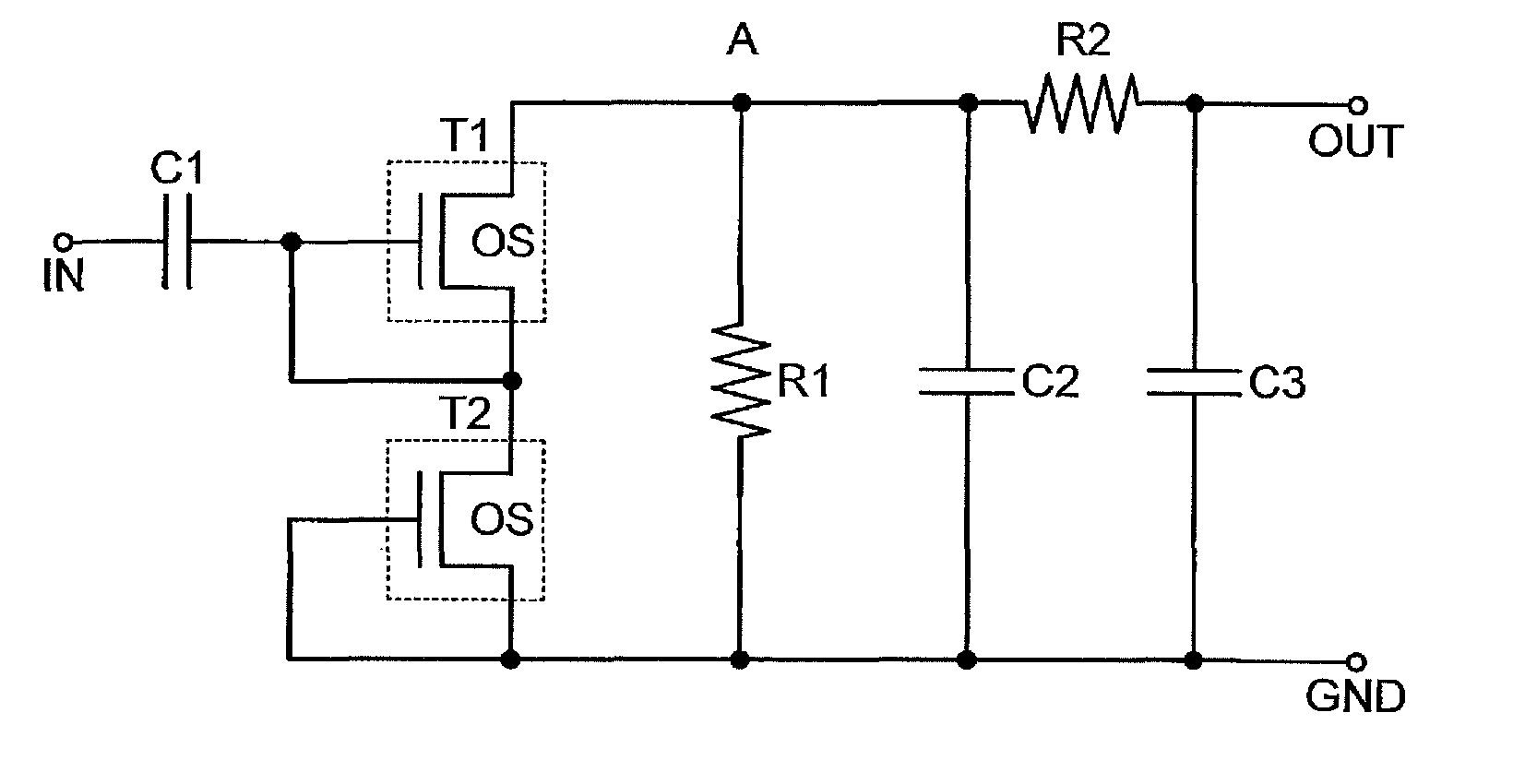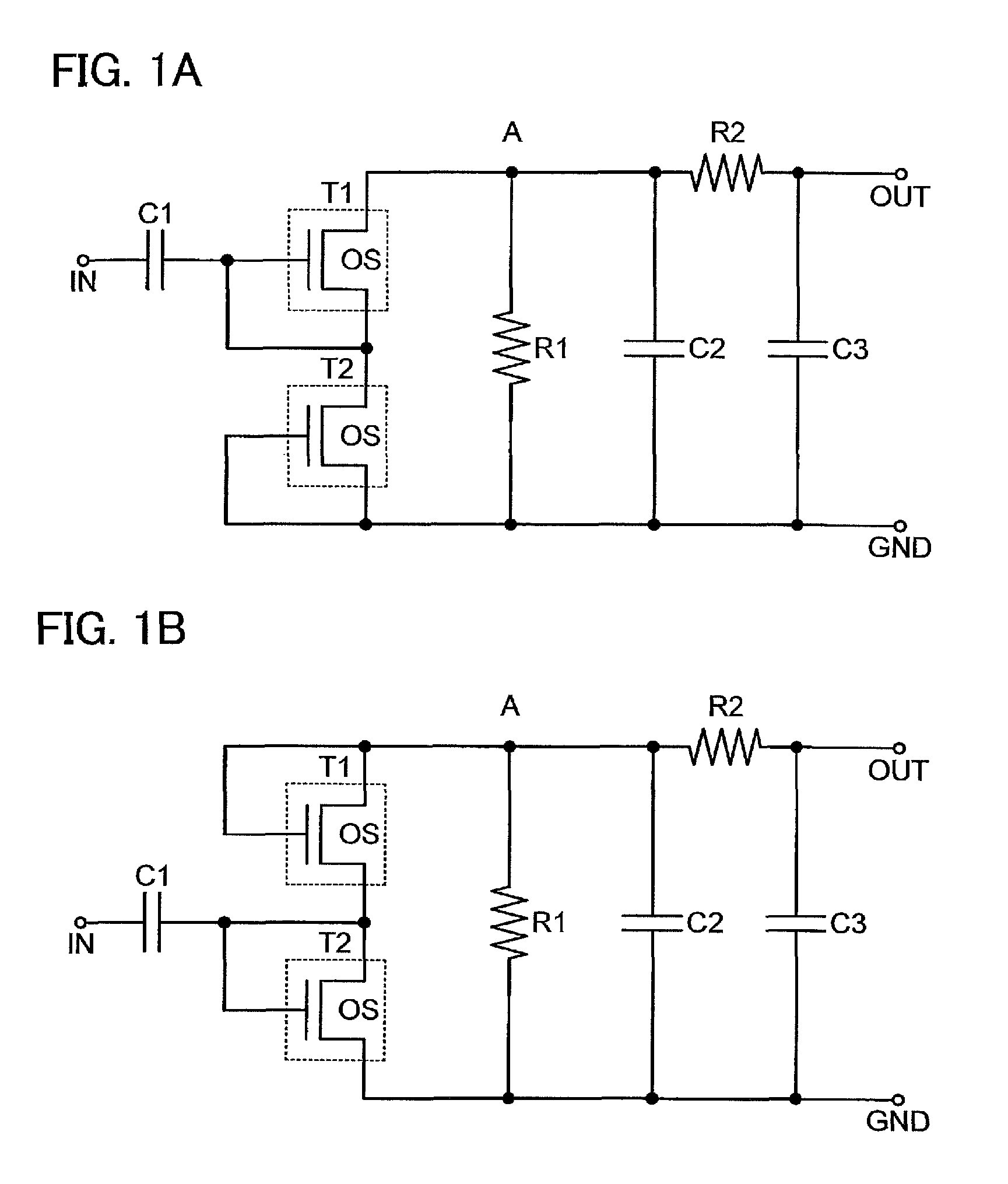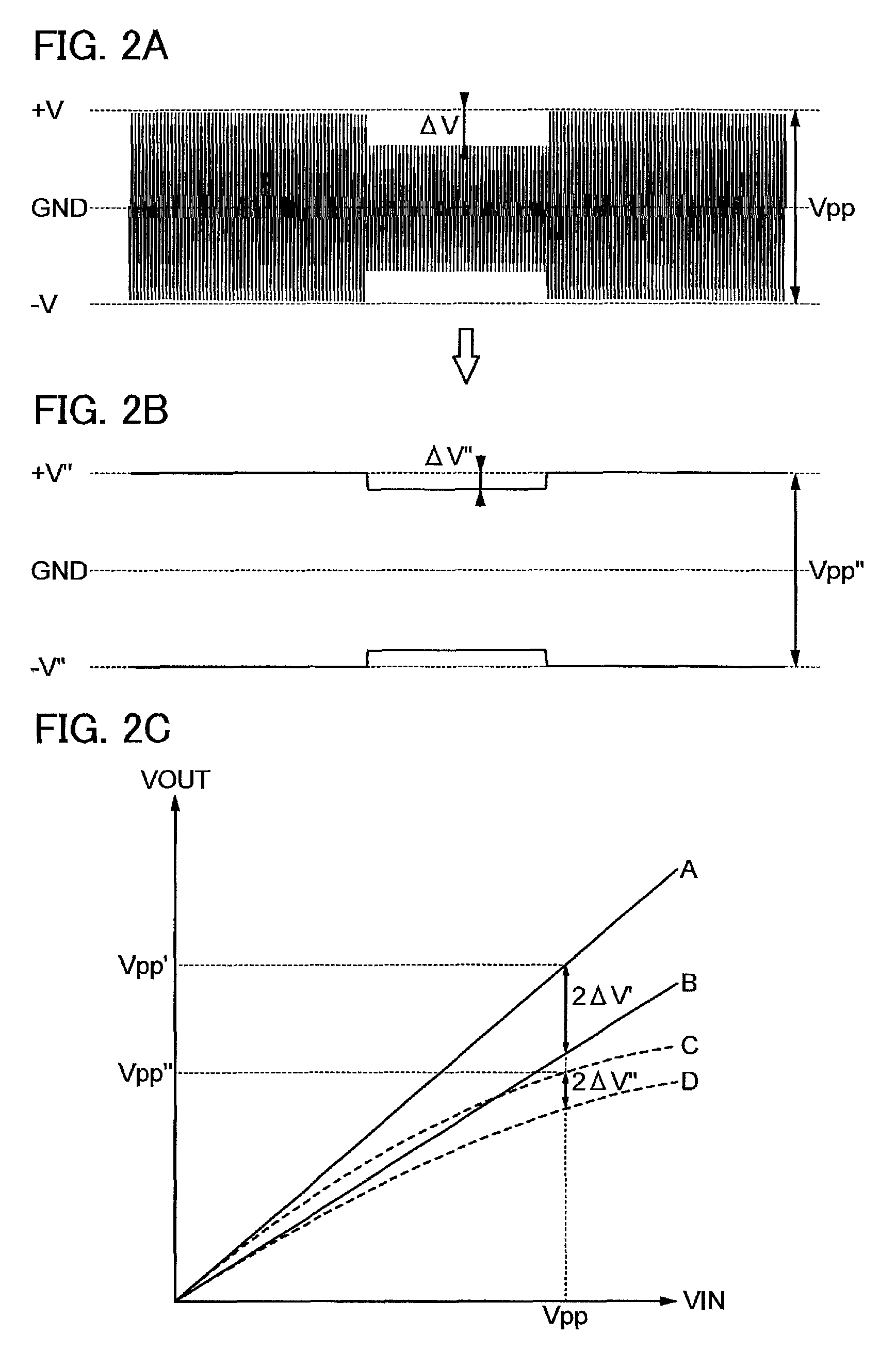Demodulation circuit and RFID tag including the demodulation circuit
a demodulation circuit and circuit technology, applied in the field of demodulation circuits and rfid tags, can solve the problems of difficult to perform sufficient demodulation and insufficient rectifying functions, and achieve the effects of improving the ability of demodulation circuits, favorable data transmission and reception, and excellent characteristics
- Summary
- Abstract
- Description
- Claims
- Application Information
AI Technical Summary
Benefits of technology
Problems solved by technology
Method used
Image
Examples
embodiment 1
[0035]In this embodiment, a circuit configuration and the like of a semiconductor device according to an embodiment of the invention disclosed herein will be described with reference to FIGS. 1A and 1B, FIGS. 2A to 2C, and FIGS. 3A to 3C. Note that in circuit diagrams, “OS” may be written beside a transistor in order to indicate that the transistor includes an oxide semiconductor.
[0036]First, circuit configurations and functions of components of a semiconductor device of an embodiment of the invention disclosed herein will be described with reference to FIGS. 1A and 1B.
[0037]FIG. 1A shows an example of a demodulation circuit of the invention disclosed herein. The demodulation circuit includes a first transistor T1, a second transistor T2, a first capacitor C1, a second capacitor C2, a third capacitor C3, a first resistor R1, and a second resistor R2.
[0038]Here, a gate terminal of the first transistor T1, a drain terminal (or a source terminal) of the first transistor T1, a source te...
embodiment 2
[0058]In this embodiment, an RFID tag which is an example to which the demodulation circuit described in the above embodiment is applied will be described with reference to FIG. 4.
[0059]The RFID tag of this embodiment includes a memory circuit storing necessary data and exchanges data with the outside using contactless means such as wireless communication. Having these features, the RFID tag can be used for an individual authentication system in which an object is identified by reading individual information of the object, or the like. Note that the RFID tag is required to have extremely high reliability in order to be used for this purpose.
[0060]A configuration of the RFID tag will be described with reference to FIG. 4. FIG. 4 is a block diagram showing a configuration of an RFID tag.
[0061]As shown in FIG. 4, an RFID tag 300 includes an antenna 304 which receives a radio signal 303 that is transmitted from an antenna 302 connected to a communication device 301 (also referred to as ...
embodiment 3
[0069]In this embodiment, examples of a transistor which can be applied to the demodulation circuit described in the above embodiment will be described with reference to FIGS. 5A to 5D. There is no particular limitation on the structure of the transistor; for example, a staggered type or a planar type having a top-gate structure or a bottom-gate structure can be employed as appropriate. Further, the transistor may have any of a single gate structure including one channel formation region, a double gate structure including two channel formation regions, or a triple gate structure including three channel formation regions. Alternatively, the transistor may have a dual gate structure including two gate electrode layers positioned over and below a channel region with a gate insulating layer provided therebetween.
[0070]FIGS. 5A to 5D each illustrate an example of a cross-sectional structure of a transistor. Transistors illustrated in FIGS. 5A to 5D are transistors including an oxide semi...
PUM
 Login to View More
Login to View More Abstract
Description
Claims
Application Information
 Login to View More
Login to View More - R&D
- Intellectual Property
- Life Sciences
- Materials
- Tech Scout
- Unparalleled Data Quality
- Higher Quality Content
- 60% Fewer Hallucinations
Browse by: Latest US Patents, China's latest patents, Technical Efficacy Thesaurus, Application Domain, Technology Topic, Popular Technical Reports.
© 2025 PatSnap. All rights reserved.Legal|Privacy policy|Modern Slavery Act Transparency Statement|Sitemap|About US| Contact US: help@patsnap.com



